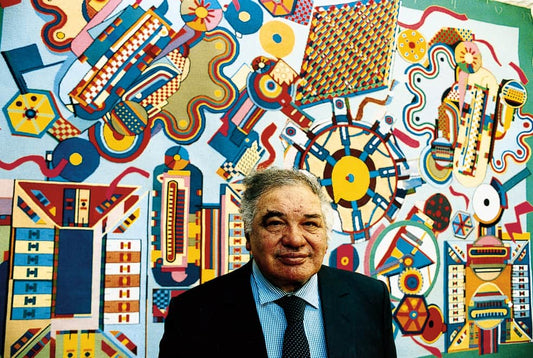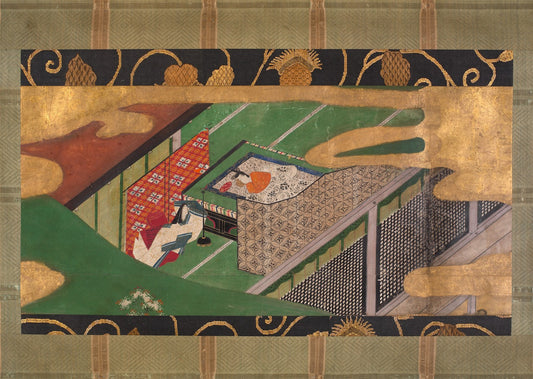Feature image: The Fortune Teller, Adrien Moreau, Public domain, via Wikimedia Commons
Uncertain Futures: A Few Moments of Fortune Telling Through Art History
Uncertainty is the only thing certain of human existence. Despite this, it seems we constantly seek control instead of accepting an unknown future.
“We would rather be 100% certain that something bad is going to happen tomorrow than have a 50% chance of that bad thing happening. That’s because when we know something is going to happen, we feel more in control.”

As Fosslien rightly suggests, we often crave being in control, finding ourselves caught up in future thoughts rather than being fully present in the moment. Because of this, the question that often arises is not about the present but rather, “What’s next?”
Over several centuries, many have turned to fortune-telling as a means to explore this question and gain a sense of control over an unknown future. Inevitably, this exploration led to numerous ‘fortune-teller’ representations throughout art history and eventually in pop culture media. Often, fortune-telling evokes images of crystal balls, an open hand revealing a palm, tarot cards, dice, fire, or tea leaves. These associations are a result of the visual representations of fortune tellers through the ages.

Fortune-telling, the practice of predicting information about one’s future, has a controversial history marked by skepticism and often opposition from scientific and religious communities. It has been criticized for exploiting vulnerable individuals and promoting superstitious beliefs, leading to its prohibition in various cultures and periods. Despite this, fortune-telling has endured and evolved, maintaining popularity in various forms like astrology, tarot, and psychic readings. It is often regarded as a blend of entertainment, spirituality, and personal reflection.
Being a steadfast cultural mainstay, fortune-telling has been depicted in a number of ways throughout different ages.

Georges de La Tour's The Fortune-Teller (year) is one of the most famous depictions of fortune-telling—and its depiction is a negative one. De La Tour crafted a scene in which a naive man is unwittingly robbed of his gold chain while his supposedly clairvoyant medium tells his future. This depiction supports a widespread view of fortune-telling as a predatory, dishonest form of money-making.
While the story in de La Tour’s painting may be obvious, many other depictions of fortune telling, like that of Adrien Moreau’s 19th century The Fortune Teller, are more ambiguous. In a way, these uncertain representations of fortune-telling better capture the true essence of the art of fortune-telling and of its allure.

Marie Anne Lenormand, who popularized the Tarot card, offers an example of a fortune-teller who made a career and gained notoriety for a knack for “correct” predictions. Lenormand remains one of the most famous fortune tellers of 18th-century France. As one Jstor Daily article notes, she “worked for 40 years as a cartomancer and fortune-teller, advising Joséphine de Beauharnais (Napoleon’s wife), Robespierre, Marat, and other important figures on their fates.” She became the fortune teller for many high-ranking individuals because her tellings often became true. Was it luck? Could she truly see the future? Or was her success the result of fooling clients with vague prophecies and pure chance?

It may be that we will never know. But these questions remind us of Heisenberg’s uncertainty principle, which states, “Everything in the world looks coincidental by any current observation method since any law or principle is expressed only probabilistically. No one can say whether a thing has absolute inevitability.” So, fortune-telling provides just one of many possibilities that could happen. With this in mind, fortune tellings are not necessarily wrong, per se— they become true only by chance.
For example, imagine a newly married couple told by a fortune teller that their marriage will end in divorce. In reality, there is a 50% chance of this happening anyway. Perhaps the fortune teller goes one step further and predicts the gender of this couple’s unborn child–again, there’s a 50/50 chance the fortune teller will be correct. The fortune teller is well aware of these probabilities— one must not be a statistician to know the likelihood of their predictions being highly probable, especially if they sneakily draw out tidbits from the couple that inform the fortune teller’s forecast.

While fortune-telling is vast and filled with uncertainty—and perhaps a bit of deception—it’s a fun idea worth a little humoring. Maybe you’ve opened a fortune cookie and hoped it might come true. Or maybe a Tarot card reading felt spot on. Perhaps your horoscope predicted you’d fall in love, and then you did. Because our lives are so uncertain and seemingly random, a little fortune-telling from time to time can’t hurt—right?
In the end, whether through ancient practices, their modern interpretations, or visual representations of fortune-telling, there’s an undeniable allure in discerning to know the unknown—this allure is as old as human existence.
©ArtRKL™️ LLC 2021-2024. All rights reserved. This material may not be published, broadcast, rewritten or redistributed. ArtRKL™️ and its underscore design indicate trademarks of ArtRKL™️ LLC and its subsidiaries.





